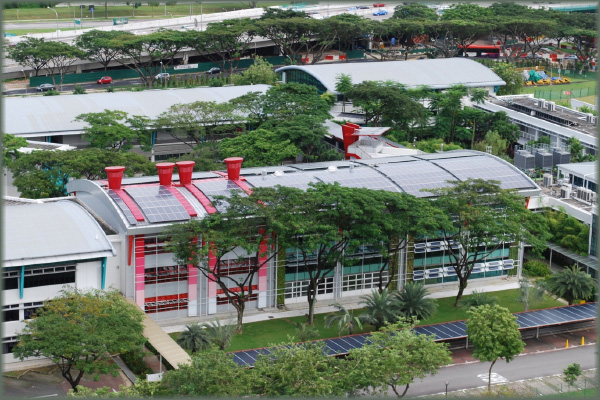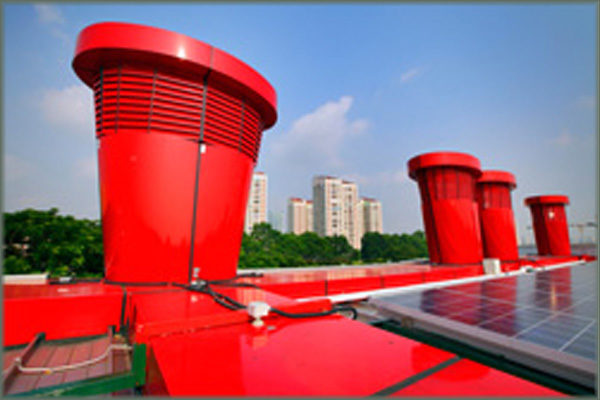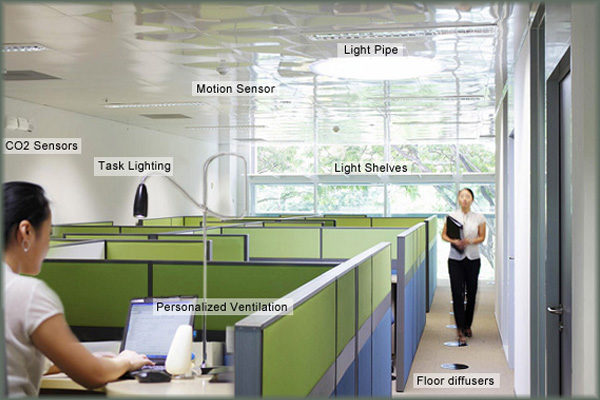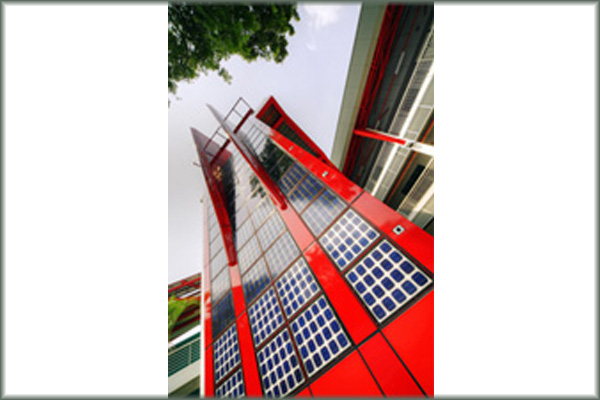
Building and Construction Authority Zero Energy Building
Energy Efficient Design Features
Summary
| Location | Braddell Road Campus, Singapore |
| Geographical coordinates | 1° N, 103° E |
| Occupancy Type | Office |
| Typology | Retrofit |
| Climate Type | Tropical Rainforest |
| Project Area | 4500 ft2 |
| Grid Connectivity | Grid Connected |
| EPI | 23 kWh/m2/yr |
Introduction
BCA is an agency under the Singapore Government’s Ministry of National Development and is tasked with developing green technologies to meet the goal of making 80 percent of all Singapore’s buildings green by 2030. ZEB is BCA’s flagship project and the first net-zero energy building in Singapore.
ZEB was conceived with two primary objectives:
-
- To serve as a laboratory for the integration of green building technologies in existing buildings.
- To be a hub for the study of energy efficient building technologies and green buildings
To meet the zero energy goal, the design team adopted an integrated design approach that focused on two general principles to reduce energy consumption: passive and active design strategies.




